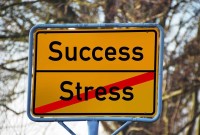- Home
- Business Processes
- Industry Knowledge
- Aerospace Industry
- Automotive Industry
- Banking Domain
- BFSI Industry
- Consumer/ FMCG Industry
- Chemicals Industry
- Engineering & Construction
- Energy Industry
- Education Domain
- Finance Domain
- Hospitality Domain
- Healthcare Industry
- Insurance Domain
- Retail Industry
- Travel and Tourism Domain
- Telecom Industry
- Leadership Skills
- eLearning
- Home
- Leadership
- Leadership Styles
- Value – Key Driver of Change
Value – Key Driver of Change
Productivity is defined not in terms of the number of goods produced, but in terms of value-added per employee. Customers don’t really buy goods and services but in fact, they buy a value - something they value. The future is all about tangible products fulfilling intangible needs. Ideas like this can transform a business and provide them a competitive advantage to thrive in the future.
People Look for Intangible Benefits
People, as Theodore Leavitt pointed out long ago, don't really buy goods and services. They buy a value - something they value. The customers want the goods or services to be accompanied by intangible benefits associated with availability at the right time and place and to express the values they require.
On the weekend of the Christmas holiday, David had a breakdown with his electricity. He took a service from Urban Clap and the person diagnosed and corrected a very small fault which had put the central heating out of action, and put it right. On that day Urban Clap was not selling them a service or a spare part, they were selling peace of mind on a festival day. That is the value that was given even when it’s not needed. It’s the confidence that someone will come when David needs one.
The enterprise providing the value is able to share economics with the consumer by using as little matter as possible in the preparation of the goods or services. So automation and materials technology keep down the amount of processing and actual stuff that has to go into the provision of goods and services.
The idea of “No-Matter”
Automation and materials technology keep down the amount of processing and actual stuff that needs to go into the production and provision of services. Products will be produced more quickly and cheaply, and with less final bulk and weight. The phrase “No Matter” encapsulates all this competitive advantage and value add. 'No matter' as a concept also includes the role of the disposable, though we have to watch its impact on the environment. The idea of no matter also covers the idea of the invisible purpose behind a sale.
For example, the invisible purpose behind a drill is not the selling of drills as such, but rather to sellability to make holes. If you use a laser drill, you are very much into the realm of 'no matter', for the laser produces holes which are by definition the absence of matter. This is all a question of tangible products fulfilling intangible needs. Ideas like this can transform a business. It is all about the effectiveness of outcomes rather than the efficiency of inputs. So the physical and the intellectual blend in the marriage of the changing mindset and the future mindset.
Mass Customisation
Next is the paradoxical idea of 'mass customization'. This is providing the customer with precisely what he or she requires, such as a garment to suit a bulky or a slender frame. Providing something that is non-standard yet can be produced as goods of standard size, weight, or other requirements. The technology now permits the non-standard to be produced on the standard line. Just a change of the computerized instructions and the trick is performed. Now customers don’t want to wait for something that is made to measure.
The same technique of mass customization can be used to provide cultural variations required in various parts of the world without setting up a special production line. The mass economy provides the benefit of scale; mass customization allows for the differentiation and individualization of requirements.
Future Trends and Change
Not so long ago you can imagine how some traditional business houses would have resisted such changes in the mindset and approach. Managers today need to group the changes which have had the biggest impact on business, industry, and society. Types of technological development have to be focused on the understanding of futurology. They can no more stick to what they know we are good at and so on. There is an emerging need to approach the present from the standpoint of the future. That's how all these developments have occurred- so much so that we find it difficult to realize the amount of resistance they initially caused.
Many of these developments are at a relatively early stage, so there is much more to follow. It is essential that managers who are going to have to cope with such changes see them as a part of their functions to educate their workforces to understand the nature of the changes we can expect, of the world in which we live and the future we can create.
Related Links
You May Also Like
-
In our present Hitech scenario, society is changing very fast. What are the skills that are most relevant for leaders in relation to the changing economic environment? Leaders need to develop skills to drive innovation and change in order to play a more central role in their organizations’ activities. How do managers accept the change and meet business expectations by becoming a key figure in driving change and innovation?
-
Change & Culture of Innovation
Predicting the future is a tricky business but managers need to have a future perspective in order to take business advantage and remain competitive. They need to drive and introduce constructive change to the business of the enterprise. The first step to creativity and innovation is to drive a culture of Innovation. Managers need to focus on developing future mindset all the time to keep pace with the unfolding future.
-
This style is characterized by leaders making decisions for others and expecting followers to follow instructions. The directive leader is adept at giving instructions, setting expectations, and establishing timelines and performance standards. However, it is possible for the same leaders to display both directive and supportive behavior as per the demands of the situation.
-
Technological advancement has brought about radical changes in the methods of work and also in the organizational structure and talent strategies. The future of work is transforming our work, workforce, and workplace. Some important trends observed during recent times are discussed below.
-
A manager or an employee in an organization who is experiencing a high level of stress may develop high blood pressure, ulcers, irritability, difficulty in making routine decisions, loss of appetite, accident proneness, and the like. These can be subsumed under three general categories, physiological, psychological, and behavioral symptoms. Stress can give rise to a number of changes.
-
Thinking & Problem Solving Skills
Today's dynamic business world demands that you make decisions that significantly boost productivity and drive competitive advantage. But how do you know whether a decision will benefit the organization? And how do you know that the decisions are based on rational and statistical reasoning? Explore how to become a dynamic problem solver with the skills to make accurate decisions.
-
Stress is a product of the busyness of modern life. It has assumed grave dimensions ever since the emergence of industrialism. In fact, stress is a natural, ongoing, dynamic, and interactive process that takes place as people adjust to their environment. Stress can be brought about by positive or negative life events. Distress can cause disease and eustress or positive stress can promote wellbeing and increased productivity. Learn to recognize and be responsible for your stress, and learn the ways to manage stress.
-
As we know change is inevitable as market expectations are not static, new technology is constantly being developed, and organizational responses are inevitable to these sequences. It is a simple matter of business evolution. If every manager and every employee could have some understanding of the triggers of change and their relationships with each other, then the acceptance to change would be easier.
-
Tools for Developing Your Team
If a manager has too many weak spots in the talent of the team, the ability to empower the team members to independently execute the project is impaired. Assignments fall behind schedule or stretch out because the needed skills or knowledge are not in place when needed. To successfully execute important projects, hiring talented people, and increasing the talents of existing staff are most important.
-
We define Lean as the systematic elimination of waste through a continual effort to decrease inefficiency; the lean leader strives to create a more efficient organization. Lean leadership is a philosophy. It is a consistent way of thinking and being in your role as a leader. The focus of this approach is on raising new leaders and help their team embrace a culture of continuous improvement. Learn what we mean by lean leadership style and its principles.
Explore Our Free Training Articles or
Sign Up to Start With Our eLearning Courses

About Us
Learning
© 2023 TechnoFunc, All Rights Reserved










